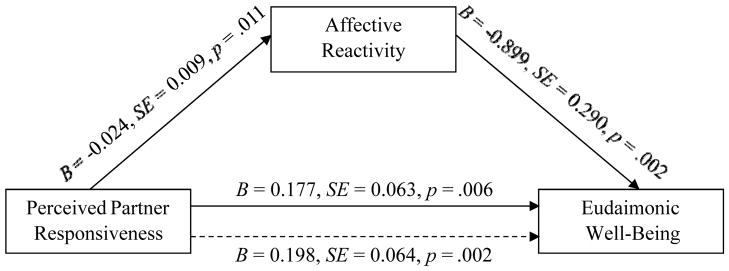Figure 1.
The indirect longitudinal association between perceived partner responsiveness and eudaimonic well-being. The numbers above the solid line at the bottom represents the association between perceived partner responsiveness and eudaimonic well-being when affective reactivity is included in the model. The numbers below the dashed line represents the same association when affective reactivity is not included in the model. To rule out the possibility that the observed associations are due to Wave 1 eudaimonic well-being, residual eudaimonic well-being scores (obtained via regressing the Wave 2 eudaimonic well-being scores on Wave 1 eudaimonic well-being scores) were used as the dependent variable in the mediation analyses. N = 555 for all analyses.

